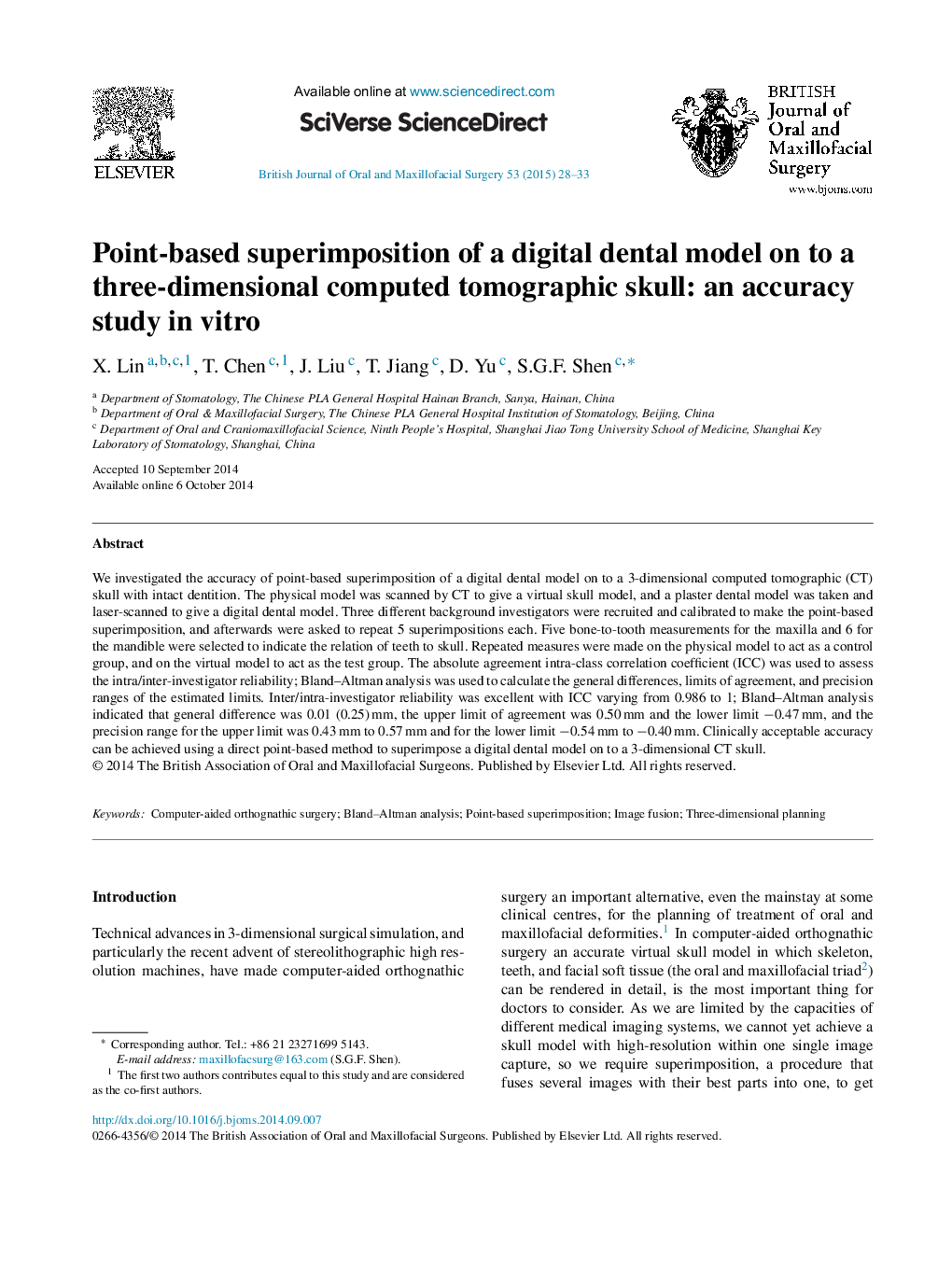| Article ID | Journal | Published Year | Pages | File Type |
|---|---|---|---|---|
| 6052123 | British Journal of Oral and Maxillofacial Surgery | 2015 | 6 Pages |
Abstract
We investigated the accuracy of point-based superimposition of a digital dental model on to a 3-dimensional computed tomographic (CT) skull with intact dentition. The physical model was scanned by CT to give a virtual skull model, and a plaster dental model was taken and laser-scanned to give a digital dental model. Three different background investigators were recruited and calibrated to make the point-based superimposition, and afterwards were asked to repeat 5 superimpositions each. Five bone-to-tooth measurements for the maxilla and 6 for the mandible were selected to indicate the relation of teeth to skull. Repeated measures were made on the physical model to act as a control group, and on the virtual model to act as the test group. The absolute agreement intra-class correlation coefficient (ICC) was used to assess the intra/inter-investigator reliability; Bland-Altman analysis was used to calculate the general differences, limits of agreement, and precision ranges of the estimated limits. Inter/intra-investigator reliability was excellent with ICC varying from 0.986 to 1; Bland-Altman analysis indicated that general difference was 0.01 (0.25)Â mm, the upper limit of agreement was 0.50Â mm and the lower limit â0.47Â mm, and the precision range for the upper limit was 0.43Â mm to 0.57Â mm and for the lower limit â0.54Â mm to â0.40Â mm. Clinically acceptable accuracy can be achieved using a direct point-based method to superimpose a digital dental model on to a 3-dimensional CT skull.
Related Topics
Health Sciences
Medicine and Dentistry
Dentistry, Oral Surgery and Medicine
Authors
X. Lin, T. Chen, J. Liu, T. Jiang, D. Yu, S.G.F. Shen,
